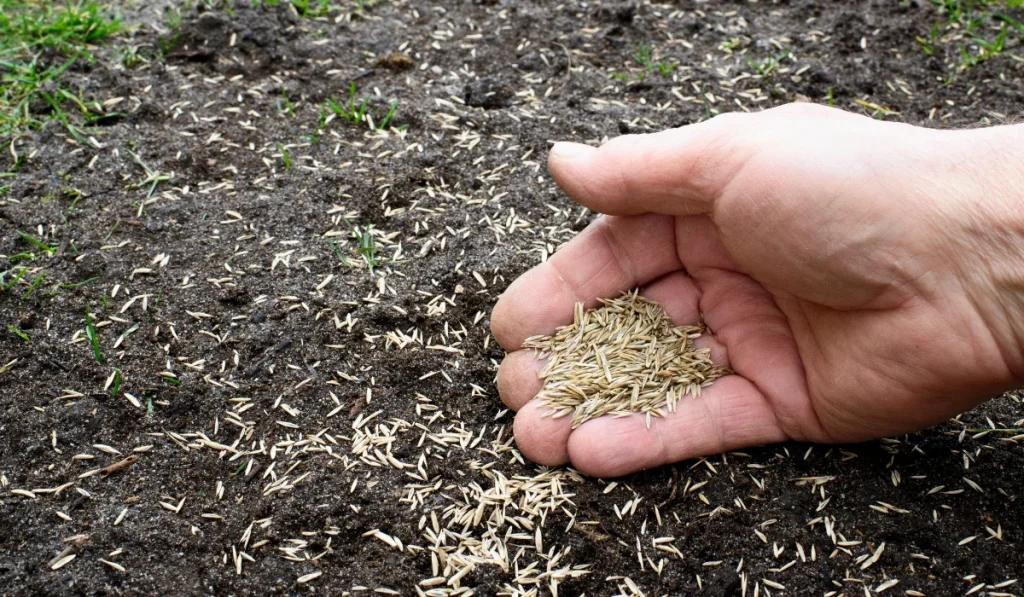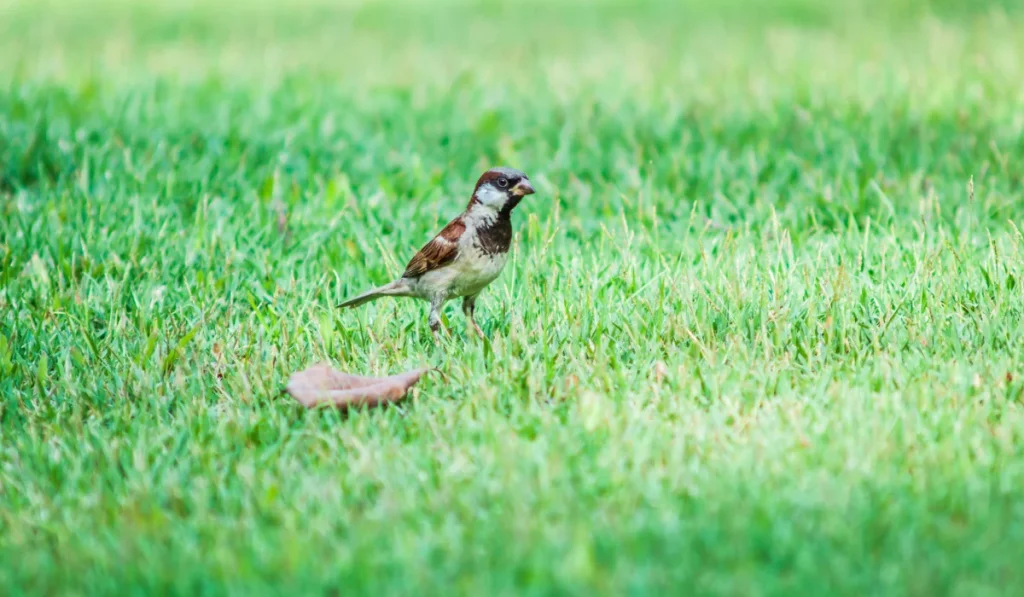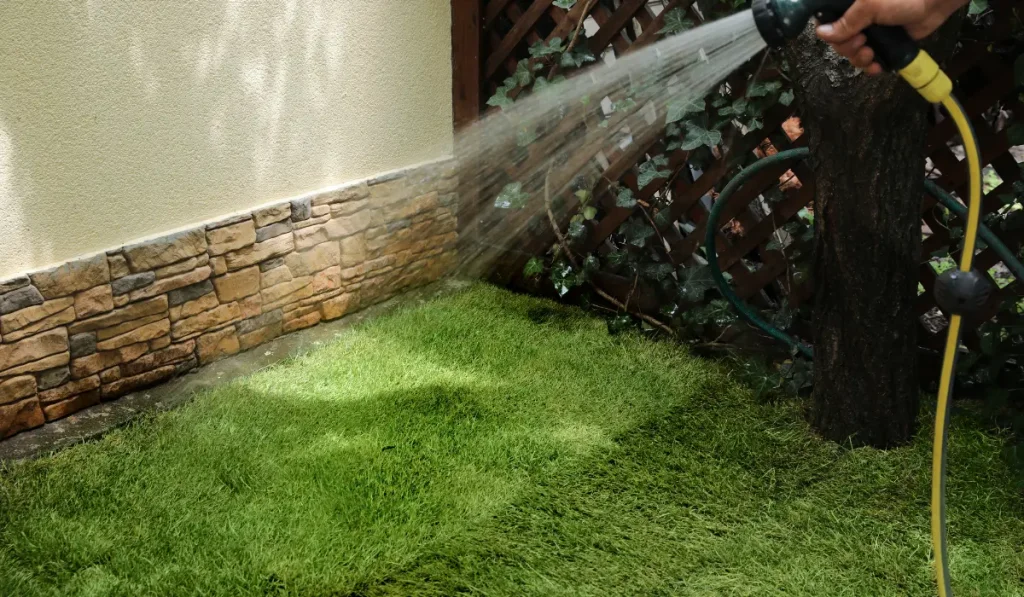If you’re planning a new lawn or looking to fill in bare spots with fresh green coverage, knowing the best time to plant grass seed is key to a successful lawn. For California homeowners, weather patterns, regional conditions, and your lawn goals all play a part in when and how to start sowing grass seed.
Key Takeaways
- The best time to plant grass seed depends on your grass type and California’s seasonal soil and weather patterns.
- Cool-season grasses grow best in early fall, while warm-season grasses need late spring to early summer conditions.
- Healthy lawns start with good soil, steady watering, proper tools like spreaders, and products like mulch and fertilizer.
- SodLawn delivers seed, sod, and local help so California homeowners can grow new grass or fix bare spots.
Ideal Time for Planting Grass Seed in California
The best time of year to plant grass seed in California is early fall for cool-season grasses and late spring to early summer for warm-season grasses.
This gives your new grass seed the right combination of air and soil temperatures, rainfall, and growing season to establish strong roots and resist pests, weeds, and drought.
Now, let’s look at what influences that timing and what you need to get right for healthy seed germination.
Type of Grass You’re Planting
California’s climate supports a range of turfgrass varieties, but your choice of seed will dictate timing.
To help you decide what to plant and when, here’s a quick breakdown of the best planting windows and recommended grass types by California region:

Cool-season grasses like tall fescue, Kentucky bluegrass, and perennial ryegrass should be planted in early fall or spring when the temperatures are mild and conditions are ideal for germination. They are especially popular in Northern California and transition zones where summers are milder.
Warm-season grasses such as the hybrid bermudagrass, zoysiagrass, centipede, and St. Augustine do best when planted in late spring to early summer, once the risk of a first frost is long gone and soil temperatures stay warm overnight.
Soil and Air Temperatures
The success of your seed germination depends heavily on soil moisture levels and warmth.
Cool-season grass seed needs soil temperatures between 55°F and 65°F, while warm-season types thrive when soils are between 65°F and 70°F and air temperatures remain consistently above 80°F.
If you’re not sure, a simple soil thermometer will give you accurate data before you start sowing grass seed.
Water Access and Rainfall Patterns
California doesn’t always play fair when it comes to rainfall. That’s why timing your seeding with the right weather conditions is smart.
For cool-season grasses, fall often brings rain to help your new grass seedlings stay soil moist without a ton of irrigation. If you’re planting in hotter months, you’ll need consistent watering until the root system is established.
To keep things balanced, consider applying starter fertilizer during the growing season to support your lawn from the ground up.
Existing Lawn and Overseeding Goals
If you’re trying to fill in bare spots in an existing lawn, you’re likely looking at overseeding.
The best time to overseed cool-season lawns is right after aerating in early fall. Warm-season lawns benefit most from overseeding in late spring, when temperatures favor fast germination and new growth.
Contrary to popular belief, pre-emergent herbicides can be used when overseeding to prevent weed growth. Carefully chosen pre-emergent herbicides specifically labeled as safe for new seeding can significantly reduce weed growth without harming your new grass. Always select a product approved for use with seeding and follow the application instructions closely to protect your grass while preventing weeds.
Sun Exposure and Foot Traffic
Think about how much sun and foot traffic your lawn gets. High-traffic areas benefit from durable grasses like tall fescue and Bermuda, which bounce back quickly.
But even though grasses need time to take root, it’s smart to plant when conditions support fast growth.
If you’re working with shaded spots, a cool-season mix will likely handle the low light better; just give it room to grow.
Topsoil and Weed Control Readiness
Good soil prep goes a long way.
Before you plant grass seed, level your topsoil, remove debris, and consider applying mulch to help retain moisture during germination. Adding a spreader to your toolkit helps you distribute seed and fertilizer evenly.
Keep an eye out for invasive weeds like crabgrass, which can choke out grass seedlings if not managed.
Including a targeted weed control plan in your lawn care can make all the difference in achieving a healthy lawn year-round.
Get the Timing and the Grass Seed Right with SodLawn
Looking to seed your lawn without second-guessing the timing?
SodLawn is here to help.
We deliver high-quality grass seed, sod, and turf supplies across California—from urban backyards to large commercial spaces.
Whether you’re planting in early spring or prepping for a new lawn in early fall, we’ll make sure you get the right type of grass for your soil and sun conditions.
Call us now to get expert help for your lawn care project.
Frequently Asked Questions
Can I plant grass seed in the middle of summer?
Mid-summer planting is risky in California due to intense sun and fast-drying soil. Grass seed struggles to stay moist, and constant watering is needed, which can drive up water bills significantly.
How long does it take for grass seed to grow into a mowable lawn?
Most grass seed will germinate in 7 to 21 days, but it usually takes 6 to 8 weeks before your new lawn is strong enough to handle mowing without damaging the seedlings.
Is it okay to walk on my lawn right after planting grass seed?
Avoid walking on newly seeded areas for at least three weeks. Even light foot traffic can press the seeds too deep, shift them around, or crush tender seedlings before they’ve built enough strength.


